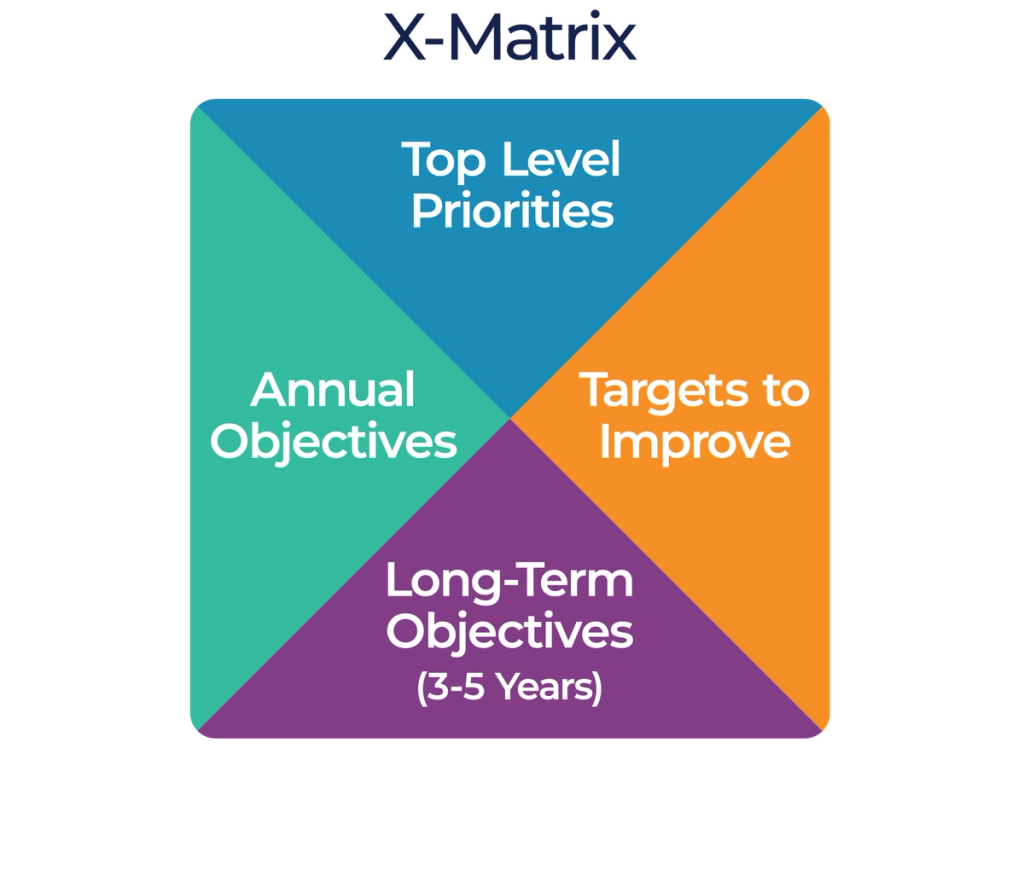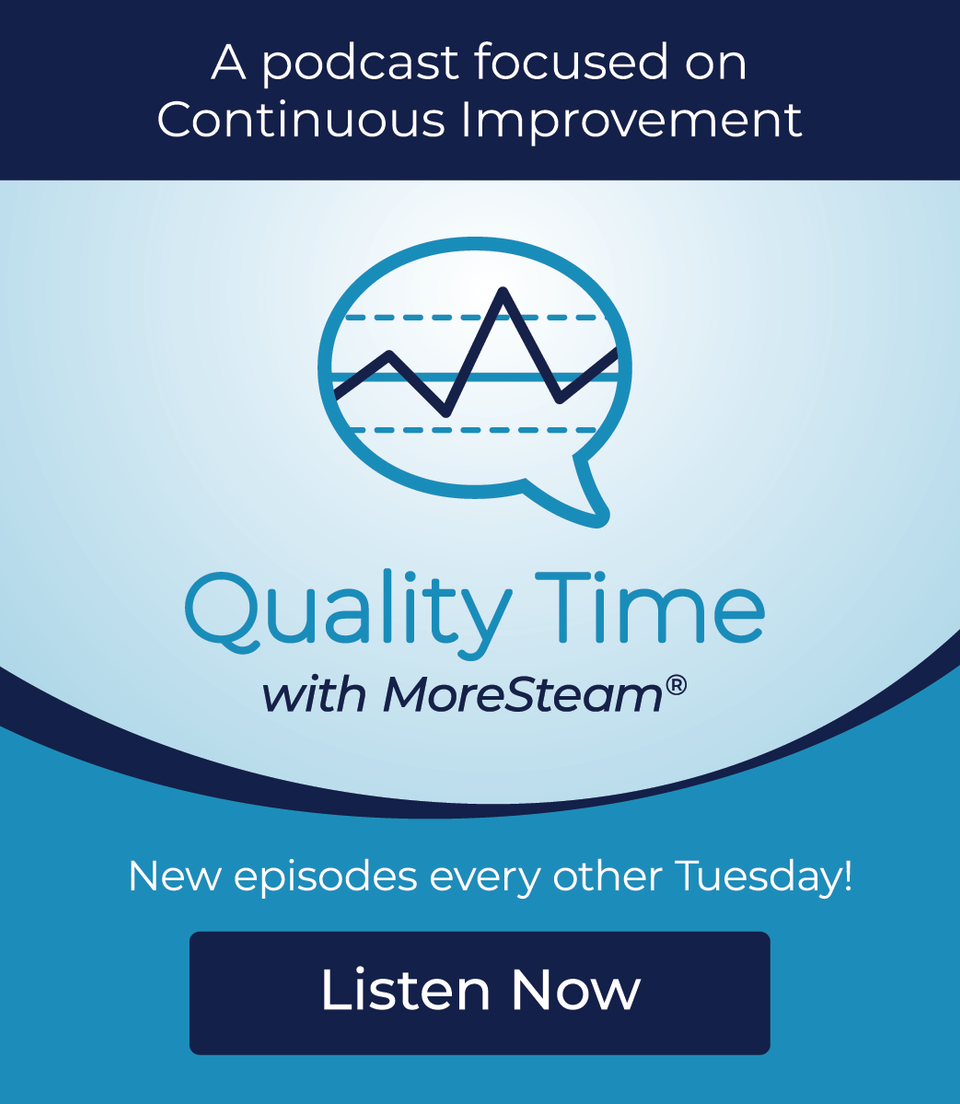
Making Your Strategy Work Across Your Entire Organization
October 4, 2024In today's volatile business landscape, where agility and alignment can make or break your company, many organizations find their strategic plans gathering dust in boardrooms while daily operations drift off course. How can you ensure that your ambitious vision translates into real-world results?
Enter Hoshin Kanri—the secret weapon behind some of the world's most resilient and innovative companies.
But here's the real question: Is your company ready to leverage this powerful approach to survive and thrive in constant change? It takes some work.
Introduction to Hoshin Kanri
Also known as Strategy Deployment, Hoshin Kanri is an integral part of a management system. It aims to align strategic objectives with daily operations across the entire organization. Toyota and Danaher are two organizations often referenced as successful at Hoshin Kanri, resulting in sustained growth and top market positions.
Alignment to goals is a critical success factor as organizations grow organically or through M&A. For alignment to happen, the entire organization has to understand how to connect to the strategy so that process improvement work supports the strategic mission.
Core Principles of Hoshin Kanri
- X-Matrix: A visual tool to align strategic goals with projects, metrics, and ownership (Who, What, When, and Why).
- Catchball Process: An iterative communication process to ensure that goals are understood and agreed upon at all levels.
- PDCA Cycle (Plan-Do-Check-Act): A continuous improvement framework that solves performance gaps performed by those closest to work.
Step-by-Step Guide to Implementing Hoshin Kanri
- Define Vision and Long-Term Goals: Set a vision and long-term objectives (3-5 years).
- Develop Annual Objectives: Break down long-term goals into actionable yearly targets.
- Cascade Goals: Cascade objectives down through the organization using the Catchball process.
- Execute and Monitor: Tracking progress and making necessary adjustments using the PDCA cycle.
Critical Reasons for Lack of Success:
- Insufficient Leadership Commitment: Hoshin Kanri requires robust and consistent leadership to drive the process and focus on strategic goals.
- Cultural Misalignment: An organization's existing culture must be conducive to Hoshin Kanri's collaborative and iterative nature; it requires a commitment of resources.
- Overly Complex Implementation: Simplicity and clarity are crucial. Overcomplicating the process can lead to delays, confusion, and failure.
- Inadequate Training and Understanding: Employees at all levels must receive proper training to participate effectively in and contribute to the Hoshin Kanri process.
Key Learnings and Examples
Company A: Lack of Leadership Commitment
- Background: A mid-sized manufacturing company implemented Hoshin Kanri to improve its strategic alignment and operational efficiency.
- Challenges: The company's leadership team failed to commit to the Hoshin Kanri process. They conducted the initial planning stages, but there was a lack of follow-through in the subsequent phases, particularly in the execution and monitoring stages.
- Outcome: Without solid leadership commitment, the company struggled to maintain the focus required to drive the process forward. As a result, strategic goals were not effectively communicated or cascaded through the organization, leading to poor alignment and minimal improvement in overall performance.
Company B: Cultural Misalignment
- Background: A global technology company attempted to implement Hoshin Kanri as part of a broader effort to improve strategic planning and execution.
- Challenges: The company's culture was heavily siloed, with different business units operating independently and resisting centralized control. Hoshin Kanri's collaborative nature, which requires open communication and cross-functional cooperation, clashed with the existing culture.
- Outcome: The cultural misalignment led to resistance from middle management and frontline employees. The Catchball process, vital for ensuring buy-in and understanding at all levels, was not fully embraced. This resulted in a lack of coordination and poor execution of the strategic objectives, ultimately leading to the abandonment of the Hoshin Kanri initiative.
Company C: Overly Complex Implementation
- Background: A large healthcare organization adopted Hoshin Kanri to streamline its strategic planning process.
- Challenges: The organization attempted to implement Hoshin Kanri using a highly complex and bureaucratic approach. The process was over-engineered, with excessive documentation, multiple layers of approval, and rigid adherence to procedures.
- Outcome: The complexity of the implementation overwhelmed employees and led to confusion and frustration. The overemphasis on process rather than outcomes caused delays and hindered the ability to achieve strategic goals. The initiative eventually lost momentum, and the organization reverted to its previous planning methods.
Company D: Lack of Proper Training
- Background: A retail company implemented Hoshin Kanri to improve its strategic alignment and boost sales.
- Challenges: The company did not invest adequately in training its employees on the principles and practices of Hoshin Kanri. As a result, there was a lack of understanding of the process, particularly at the middle management level.
- Outcome: Employees were unable to effectively participate in the Catchball process or apply the PDCA cycle because they had not received proper training. This lack of understanding led to inconsistent application of Hoshin Kanri, and the strategic goals were not achieved. Ultimately, the company deemed the initiative a failure before discontinuing.
What Success Can Look Like
Toyota
- Background: Toyota is one of the pioneers of Hoshin Kanri. The method is integral to its management system, often called the Toyota Production System (TPS).
- Implementation: Toyota uses Hoshin Kanri to align its strategic objectives with daily operations at every level of the organization. The company's long-term vision is divided into yearly goals that are then cascaded throughout the organization using the Catchball process. This approach ensures that everyone—from top executives to factory floor workers—understands and contributes to achieving the company’s goals.
- Results: Hoshin Kanri has been instrumental in Toyota's success, enabling the company to maintain its reputation for quality, efficiency, and innovation. The alignment of goals and continuous improvement culture has allowed Toyota to consistently achieve its strategic objectives and maintain its position as a global leader in the automotive industry.
Danaher Corporation
- Background: Danaher, a diversified conglomerate focusing on industrial and medical products, has used Hoshin Kanri as part of its broader Danaher Business System (DBS).
- Implementation: Hoshin Kanri is a key component of DBS, helping Danaher to align its strategic initiatives with operational execution. The company uses Hoshin Kanri to set strategic priorities, which then cascade through the organization using the Catchball process. The company rigorously applies the PDCA cycle to ensure continuous improvement and adaptation to changing market conditions.
- Results: The disciplined application of Hoshin Kanri within the DBS framework has been a significant factor in Danaher's growth and profitability. The company has consistently outperformed its competitors by maintaining strategic focus and operational excellence.
Updates on Industry Trends
Recent trends in Hoshin Kanri highlight its growing relevance, particularly as organizations seek more integrated and adaptive strategic processes. Companies are increasingly leveraging Hoshin Kanri to align strategic objectives with daily operations, ensuring that every level of the organization works toward the same goals.
Hoshin Kanri is gaining traction in Western companies as they recognize the need for strategic alignment that goes beyond traditional management by objectives. Its emphasis on continuous improvement and strategic alignment makes it particularly appealing in today's fast-paced business environment, where agility and coherence across all levels of an organization are crucial.
Adopting Hoshin Kanri as an Organization
In today's rapidly evolving business landscape, aligning strategic vision with day-to-day operations is more crucial than ever. Hoshin Kanri offers a structured yet flexible approach to ensuring that your organization remains focused on its long-term goals while adapting to changes.
By breaking down strategic objectives into actionable plans, engaging teams at all levels, and relentlessly focusing on continuous improvement, companies like Toyota, Nissan, and Intel have successfully navigated industry disruptions and maintained their competitive edge.
Is your organization ready to turn its strategic vision into reality? By implementing Hoshin Kanri, you can move beyond boardroom discussions and ensure that every team member works towards the same ambitious goals, driving your organization forward cohesively and powerfully.

MoreSteam
Ken Robinette joined MoreSteam in July of 2023 as the Vice President of Business Development. He is responsible for developing, executing, and overseeing a business strategy that prioritizes growth and positive customer ratings. He has over 30 years of business experience in various markets and functional roles, including Sales, Design, Production Management, and Process Improvement. Prior to joining MoreSteam, Ken spent over 18 years in the healthcare industry, working at Cardinal Health and Scapa Healthcare. He is trained and certified in the Danaher Business System by Shingjutsu Kaizen and in Six Sigma by General Electric.
Ken has a B.S. in Aerospace Technology from Kent State and an M.B.A. in Operations Management and Quality from the Illinois Institute of Technology.







